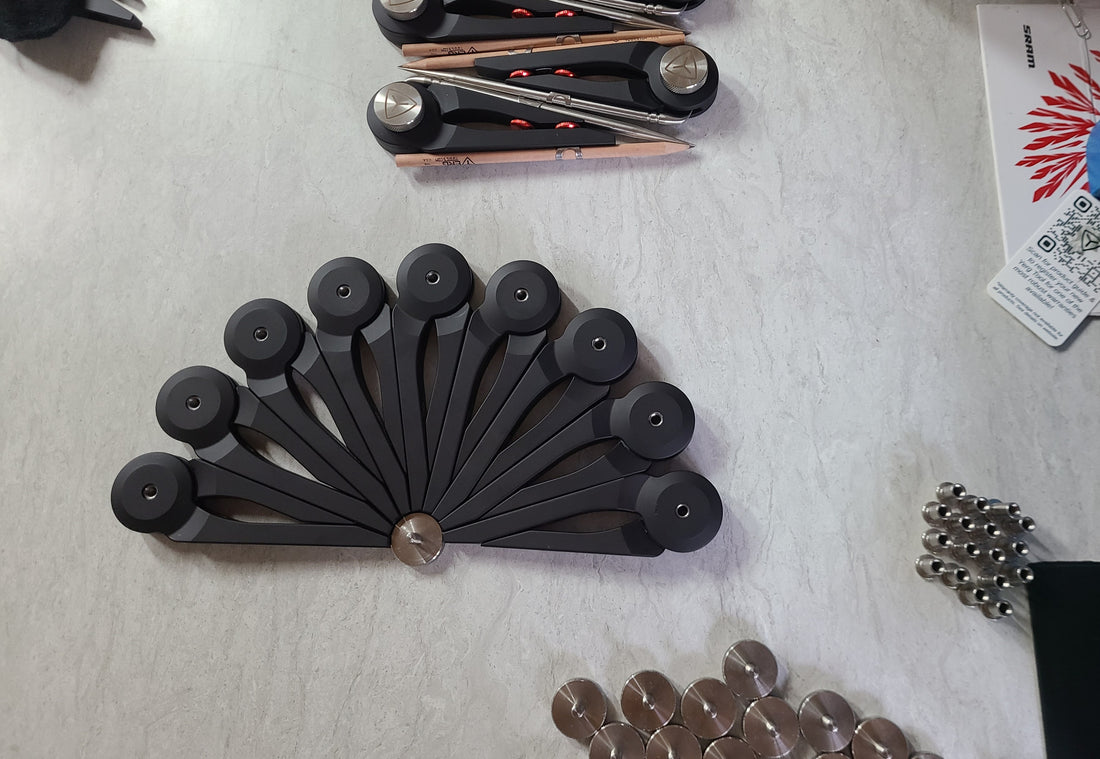A little while back, I rambled on about quality, its parts, and how it might be defined. Thinking that my treatment of the topic was satisfactory, I left it to cure for a while. After recently revisiting the article, however, something strange happened. A small rouge band of topic thoughts flooded my mind, laying siege to my feeble wits, and forcing me to relinquish my assumptions on the subject. Further reflection on my original handling of it was now necessary.
The more my thoughts were chased through the colonnade of quality-definition, I began realizing that the various elements I previously pointed out dealt merely with the physical elements of what might put a rope around the meaning of quality. Without forcing you to look backwards, I purported these quintessentials:
- Looks / feels good
- Functions well
- Lasts as expected
- Is predictable
- Made with precision.
But now, I realize there's more to the story. In fact, there is a whole realm governing the excellence of a thing that I hadn't before considered. After some reflection, more nuance came flooding in requiring more treatment. Let me stir the waters and hope I don't muddy them... too much.
This realm I speak of is the essence of, or the philosophy regarding, quality. It's maybe the underlying feeling that attracts your eye and fills you with feeling, even if you can't formulate words or reasons for its allure. No, I'm not going to get technical about height/width ratios, material selection, ergonomics, or anything like that. There is a plethora of resources on that subject from sophisticates greater than I. Right now, my aim in this post is to merely give you a handful of markers that can clue you into what makes for great design, which may also enable you to discern things of lesser quality than they pose to be. To do this, lets spend a moment in a compressed simulation of the process. Ready?
Designing. Planning. Pondering. Gathering. Researching. Orchestrating. This is where it begins. Consider every step, from conception and prototyping to delivery and first use to being purchased by tough-mitted Neanderthalic buyers; enduring years of strenuous use, carelessness, and abuse, all the way to final retirement. What does the design need to encompass?
- Purpose. You are faced with budget limitations, timelines, and design requirements and constraints. But it's the thought, the sleepless nights, the struggle, and ultimately sticking the landing after launching that is the making of something so highly desired. But simply heaping hours of cogitation is not a valid recipe. We start with putting ourselves in the customer's shoes; enacting the Golden Rule: Do unto others as you would like done to you. Think as if you are the end user. Act as if you are required to produce and assemble it. Imagine that you are the one performing repairs and dealing with angry customers. See yourself as the angry customer. Consider that you will be the one to promote and market the product. Don't forget, you also need to be profitable. How would you want it to be designed? With all this in mind, where does one start? Glad you asked. That's the next phase.
- Minimalism. You have an idea. Wrestle with the complexity until it results in simplicity. You ideate, iterate, test, revise, and start again. Strip the thing to its essence, replace only what's necessary. You eliminate one more superfluous element, resulting in a few more required. Try again. You deviate from the design intent; yet find your way home, remembering the guiding purpose. The process goes on and on, and threatens to be never-ending. Good designers engage in this process. Great designers plan and navigate the process with skill, setting a course, establishing limitations, and occasionally breaking them. One must know how to begin and where to stop. Great mental effort is put into creating something that has "everything I need and nothin' that I don't", to borrow from Zac Brown.
- Lasting desirability. Your best companion in the prototyping and pre-launch phase is humble self-criticism. This ability is as difficult as it is priceless - to birth something in your mind, and while holding it in your hands, look at it with humility, seeing it through the eyes of an internet troll, then mercilessly attacking your creation from every angle in hopes of finding a weakness so as to make it better. You then surrender it to the harsh accusations of your peers, knowing they see what you cannot. These corrections hurt at first, but you stay focused on the best possible outcome, even at the sacrifice of your pride. There is something god-like in this dance; loving what is formed, yet not being satisfied with it, knowing it's capable of more. Creating while drinking humility in large doses - it's what makes us like God. But, back into the fire it goes. You'll know when it's right. It will please its maker and many who interact with it, but it may not please everyone, and that's okay!
- Efficiency of production. These are a few often overlooked elements to consider: FFF (Function Follows Form), DFM (Design For Manufacture), and EoR (Ease of Repair). Don't forget the poor folks in the assembly department. Also, design for customer care, packaging, retail presentation, et all. There's a lot going on here.
- Elicits higher sense of self. Possibly one of the most understated aspects of great design is the way something makes you feel. It's totally unscientific, I know, but it's very real - the sensation you get in a space that elevates your thinking, or the surge of confidence you get as you hold a device. Maybe you're familiar with that tingling in your spine as you see something of utter simplistic beauty. How could I have omitted this?
I would like to step out of script for a quick moment to do a little emotional navel gazing; some philosophizing. Because looking at a topic from only one or two angles is no way to examine it! I'll be quick.
Before spit-balling any ideas, storyboarding, or jumping into CAD, it's always a good idea to examine our end goals, our deep motivations, our personal garbage. We all have it. We're all damaged goods; never beyond repair. If you’re okay with dark places, maybe it's time to search out your past. What is it that makes you think the way you do? Why do you get hung up on those small details? What baggage are you carrying into this design process that really should be left at the door (and not pick up on your way out)? Is there someone you need to forgive so you can be free? If you have the courage and personal fortitude to shine a light on these, and many other similar questions, you likely have what it takes to enter the design world and do well in it. Tucking the difficult past away means it unexpectedly sneaks up on you later, only larger and more fierce. So, before the beast gets any bigger, take some time for some mild self-examination and hack away at those rough spots. Tame that beast. It’s really not so bad.
If allowed to carry past regrets, grudges, and pride, along with a myriad of other untreated plagues, into your professional space, I assure you, that bad energy will haunt you and those you work with. Everyone's combined issues can make your workplace look like an episode of reality television. Those unseen weights around our necks can become so large that they blind us from seeing the truth about ourselves and others. It can cause myopia in both the short and long term, leading to poor decisions that affect both. Pride is particularly insidious, as it keeps you closed off from suggestions and improvement, it keeps you thinking your way is always right, ultimately blocking positive change and improvements. Address the past, and the future will open up. It’s hard, but so worth it!
Observe the creativity of a young child, who hasn’t had the burdens and trauma placed on them. There is a free, hopeful spark of life in their creations. They put themselves into their play. They are in full engagement as they compile components into something that spawned from their naive imagination. And it's beautiful!

But for most of us adults, the child inside struggles, sometimes suffocates, under the weight of adult-sized baggage. What could we create if we were free of those chains?
I suppose that freeing ourselves from such inner weight is the first, and most frequent, exercise to perform before starting any new endeavor. If you resonated with any of this, I would direct you to the podcasts of Dr. Jordan Peterson. If this hit you viscerally, it might be time for a therapist. See, I told you it'd be quick!
Hopefully, on this path we’ve learned that easy, quickly-conceived designs frequently hide bloat, extra costs, and often undesirable flaws that breed difficulties down the road. We know that a product simply looking and/or feeling good, functioning well, lasting a long time, being predictable, and precision-made is nowhere near a complete definition for good design. You’ve kept everything in proper perspective, and despite the headache you have from conceptualization and design meetings, the black eye you got from prototyping, the split lip from pre-launch, and the bruised rib in production, you’ve made it! You may have glimpsed into some inner darkness, but hey! You lost some emotional weight, which looks good off you. It’s time to sit back and bask in the glory of your finished product. So raise your glass, sip that champagne, and get ready for another round… No, I meant another round of product design. More champagne after that.
Cheers!
Ps. If you're looking for more great content, check out this article!

